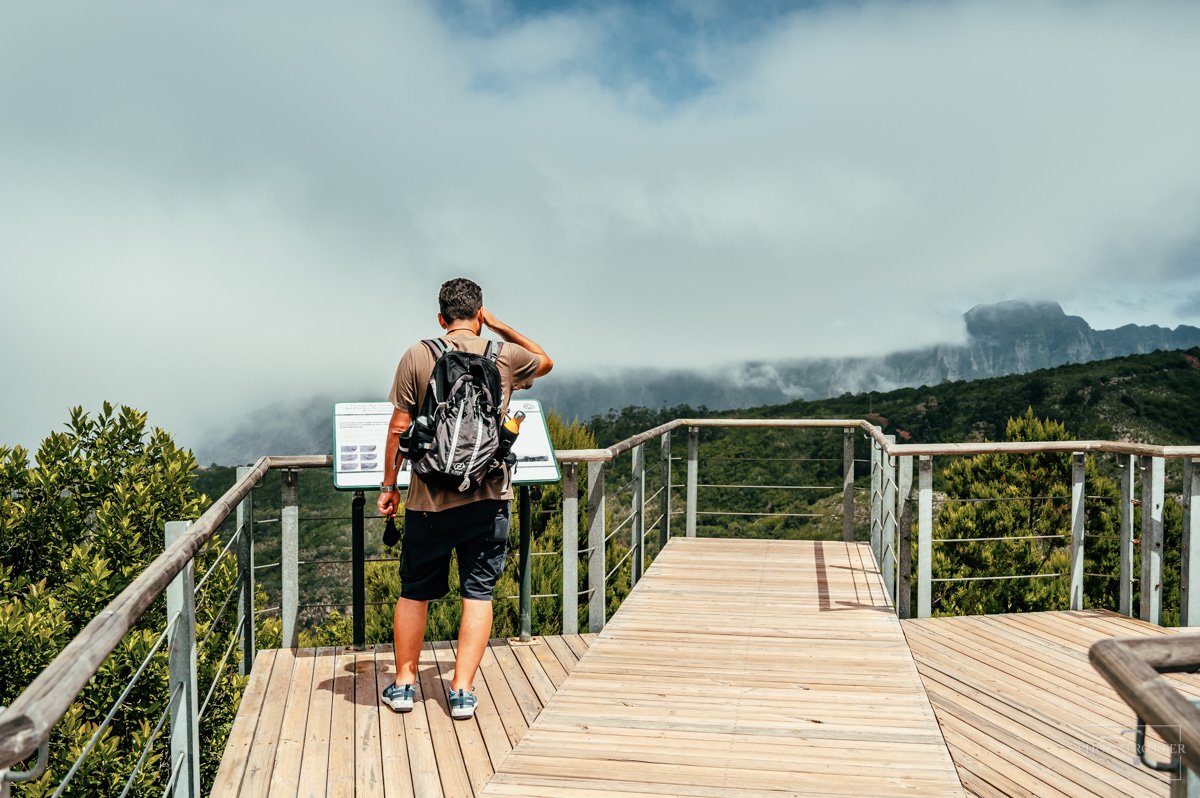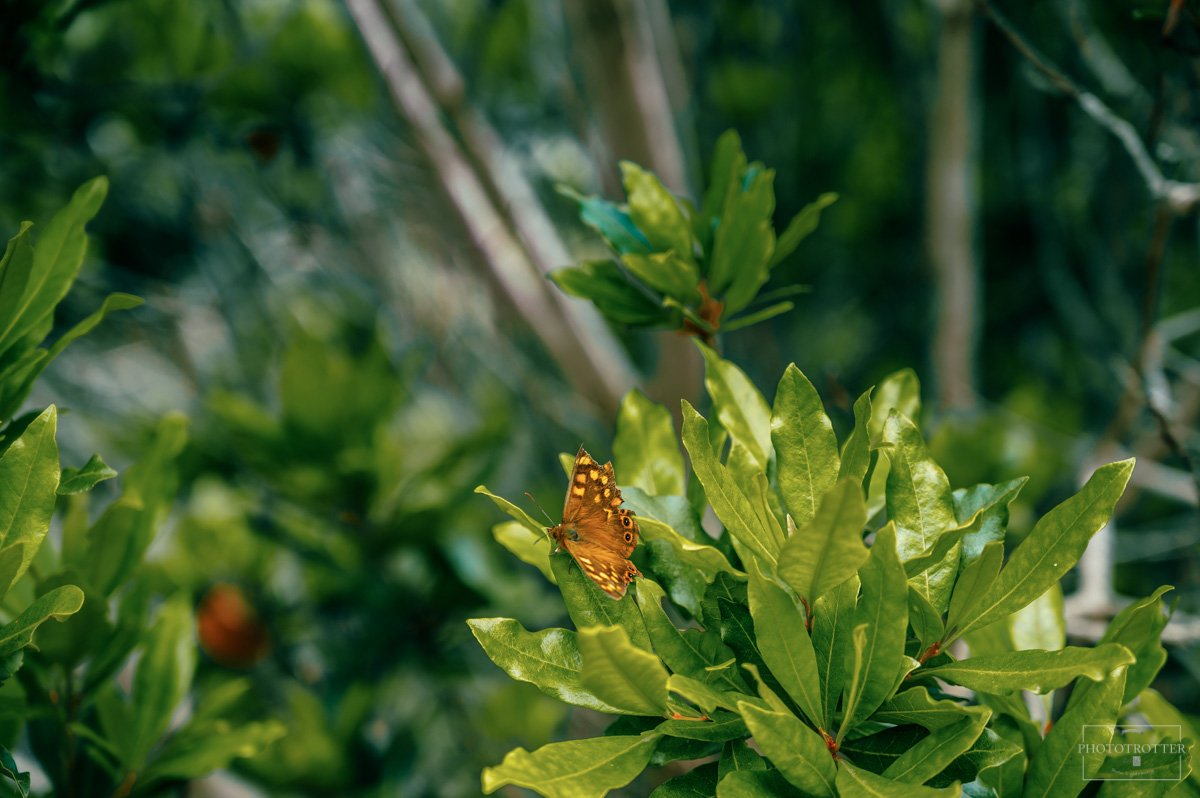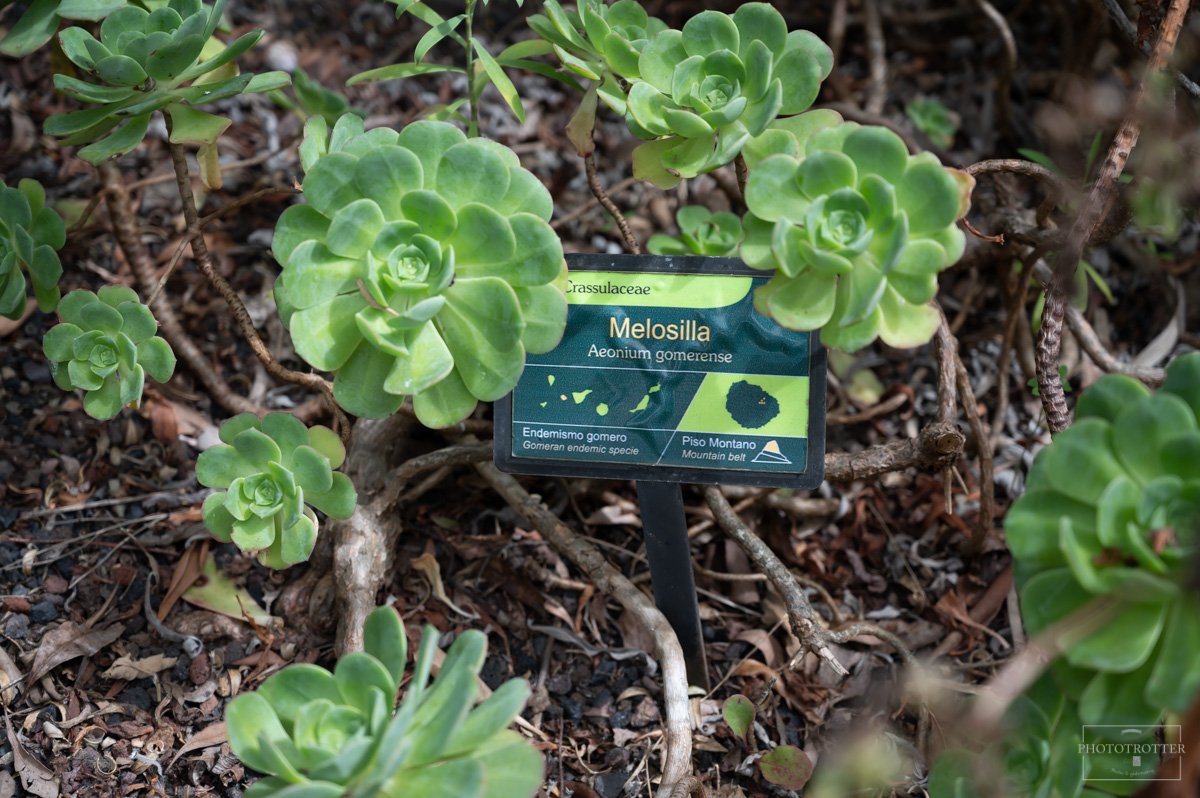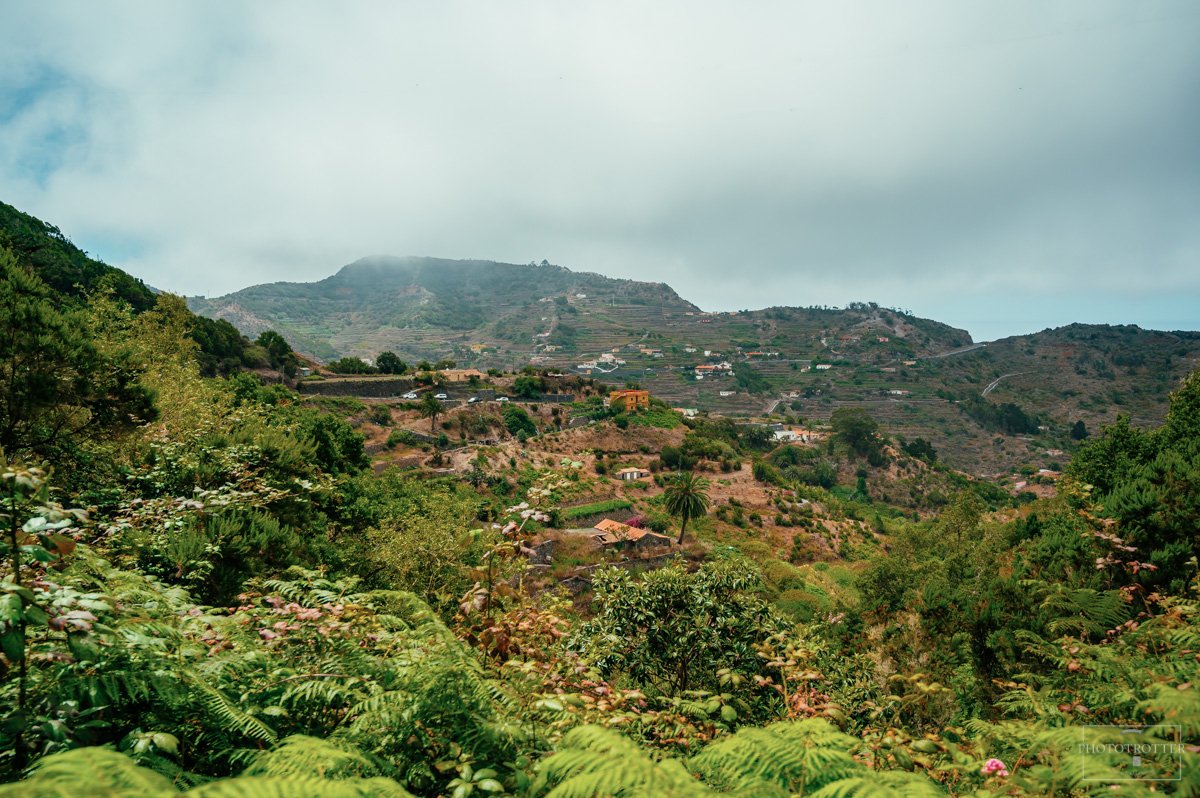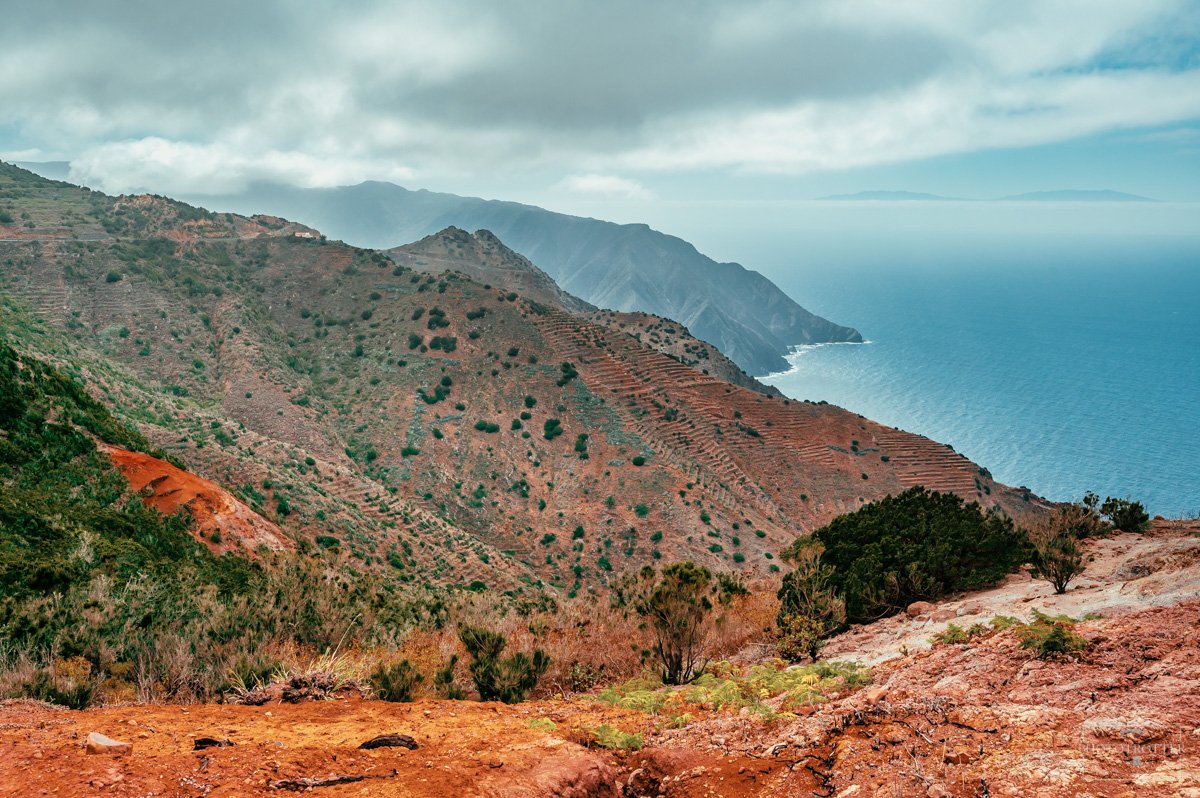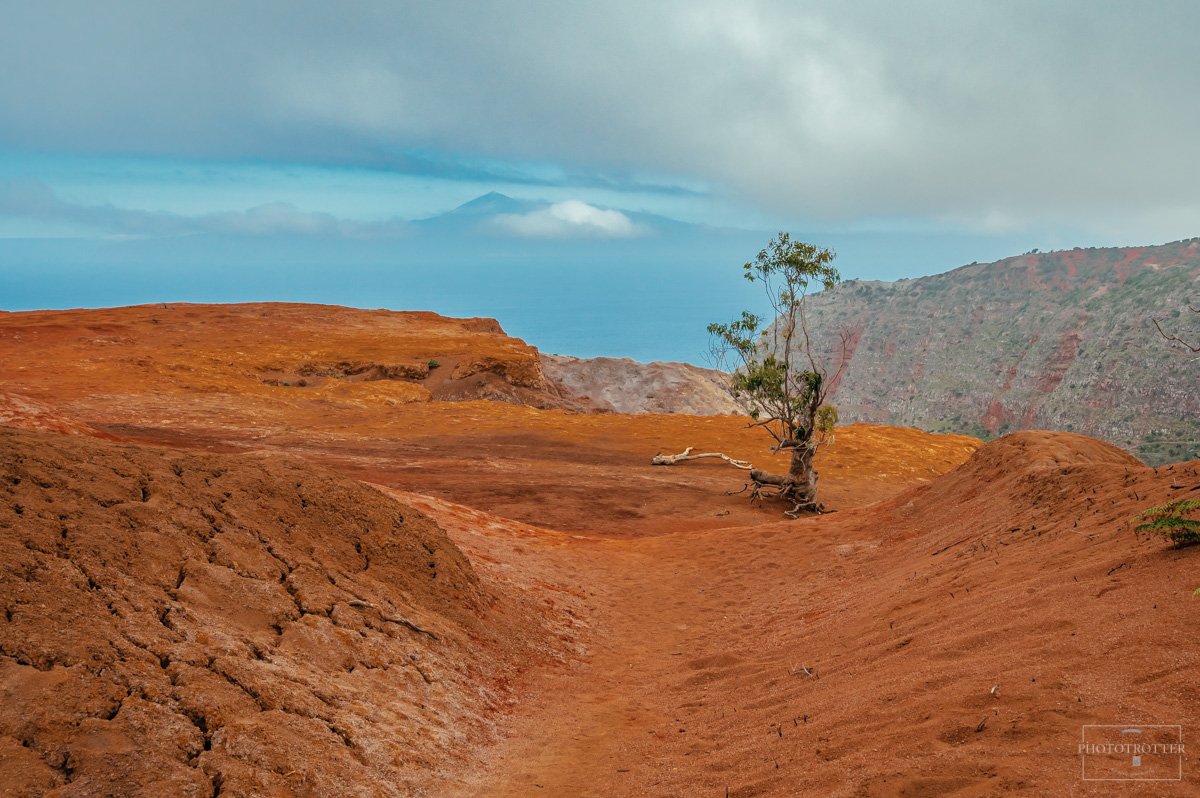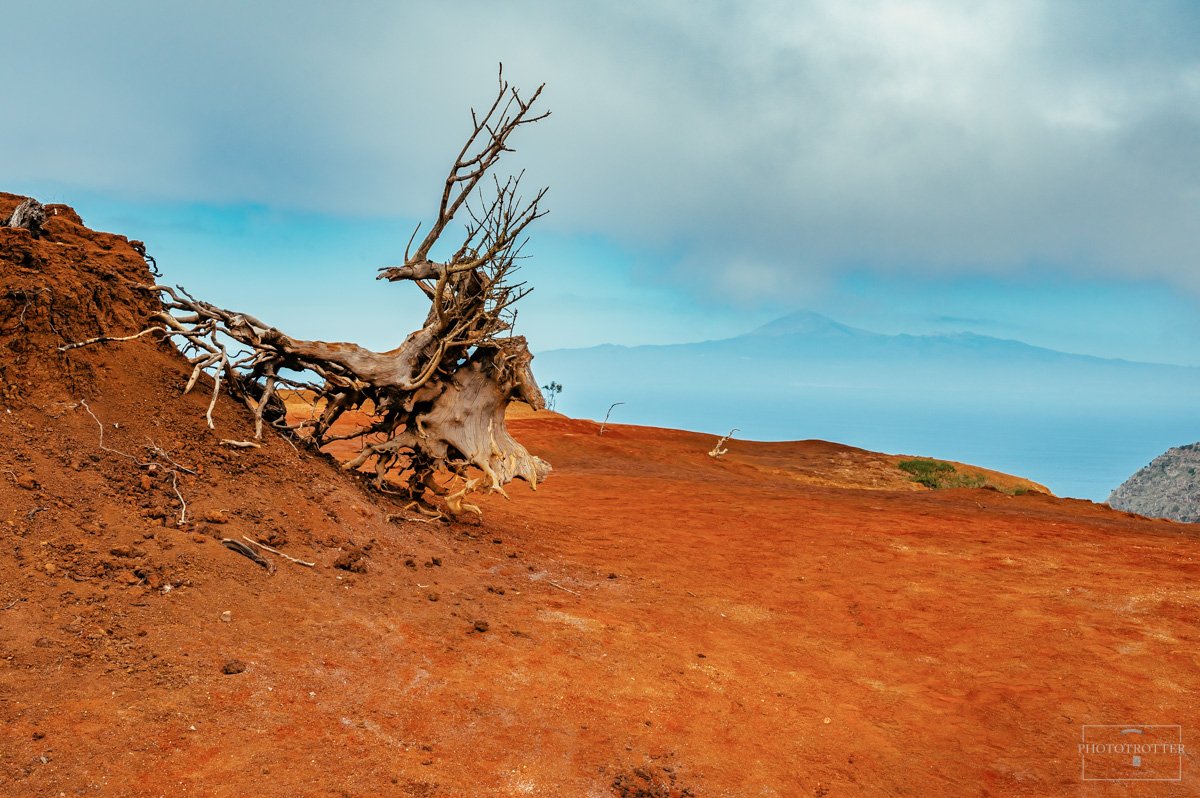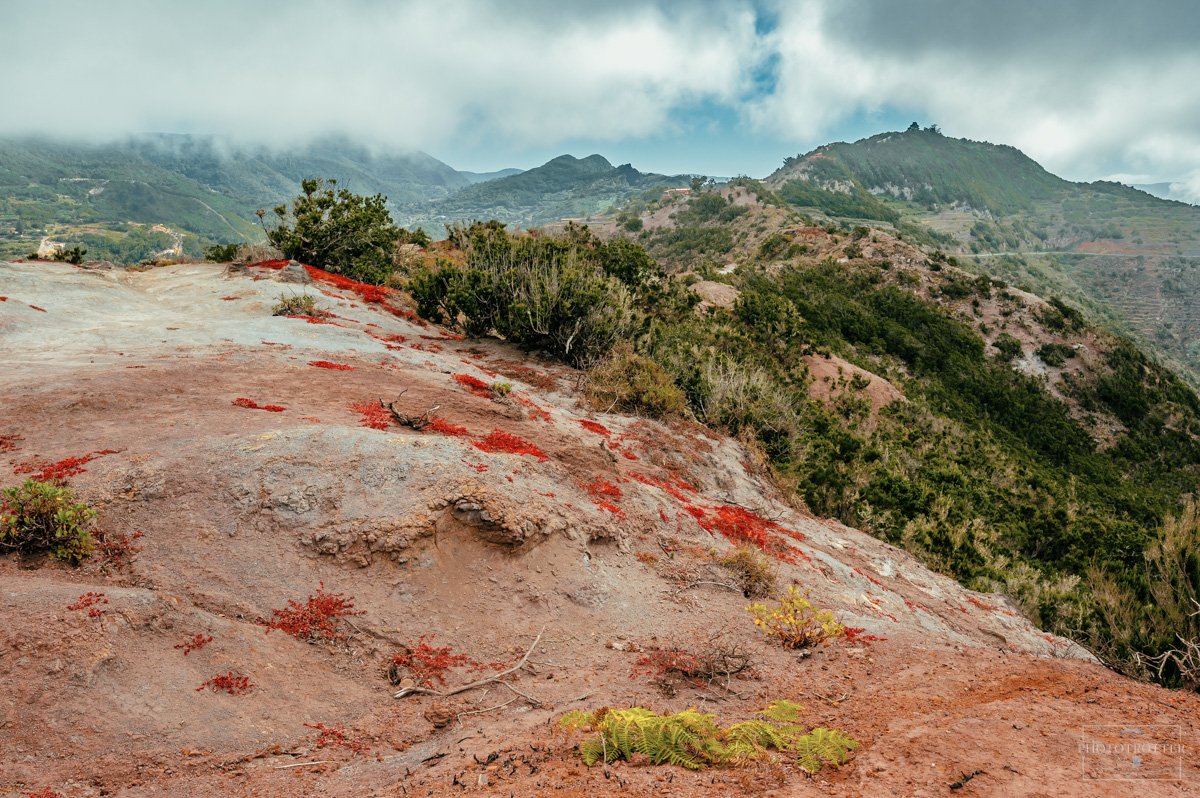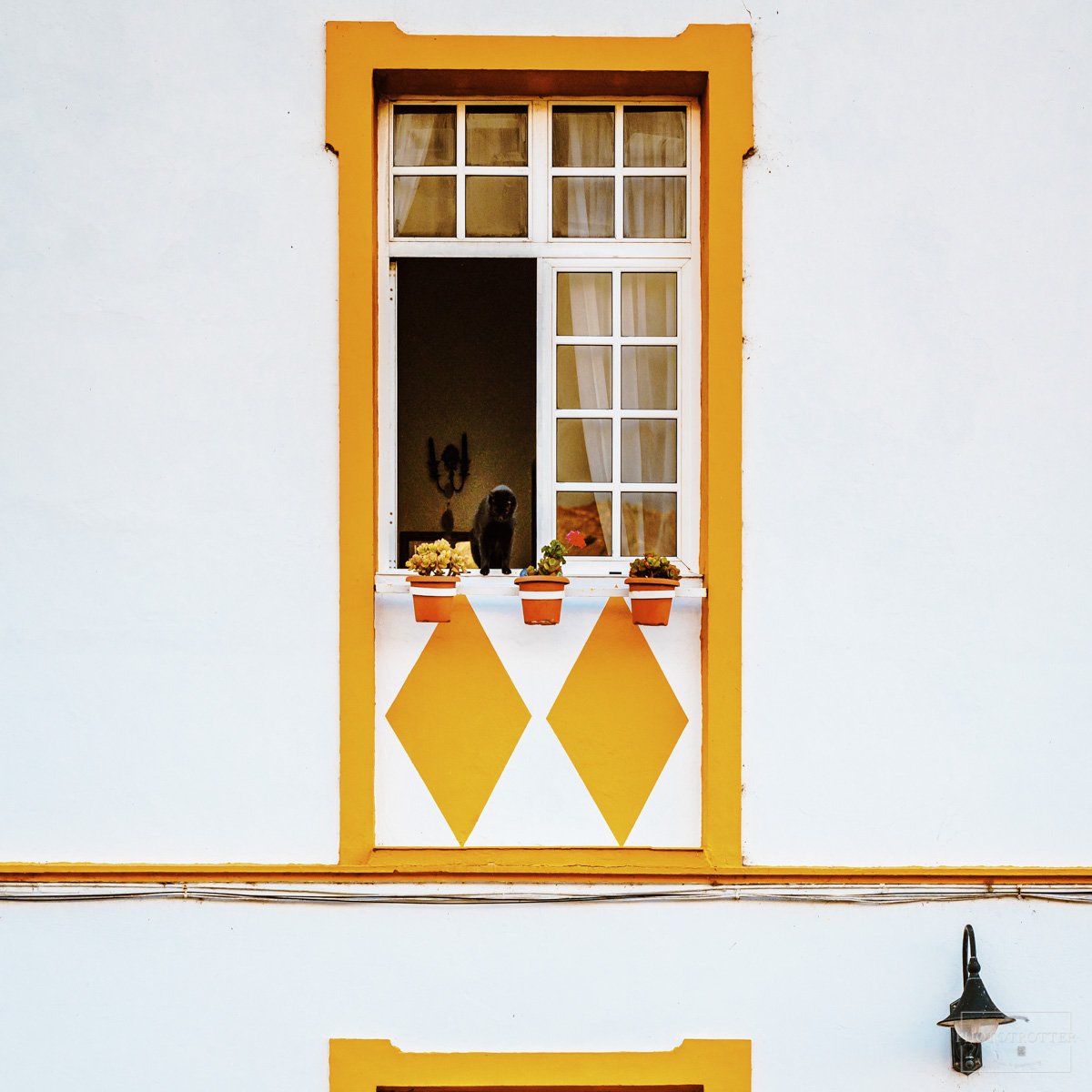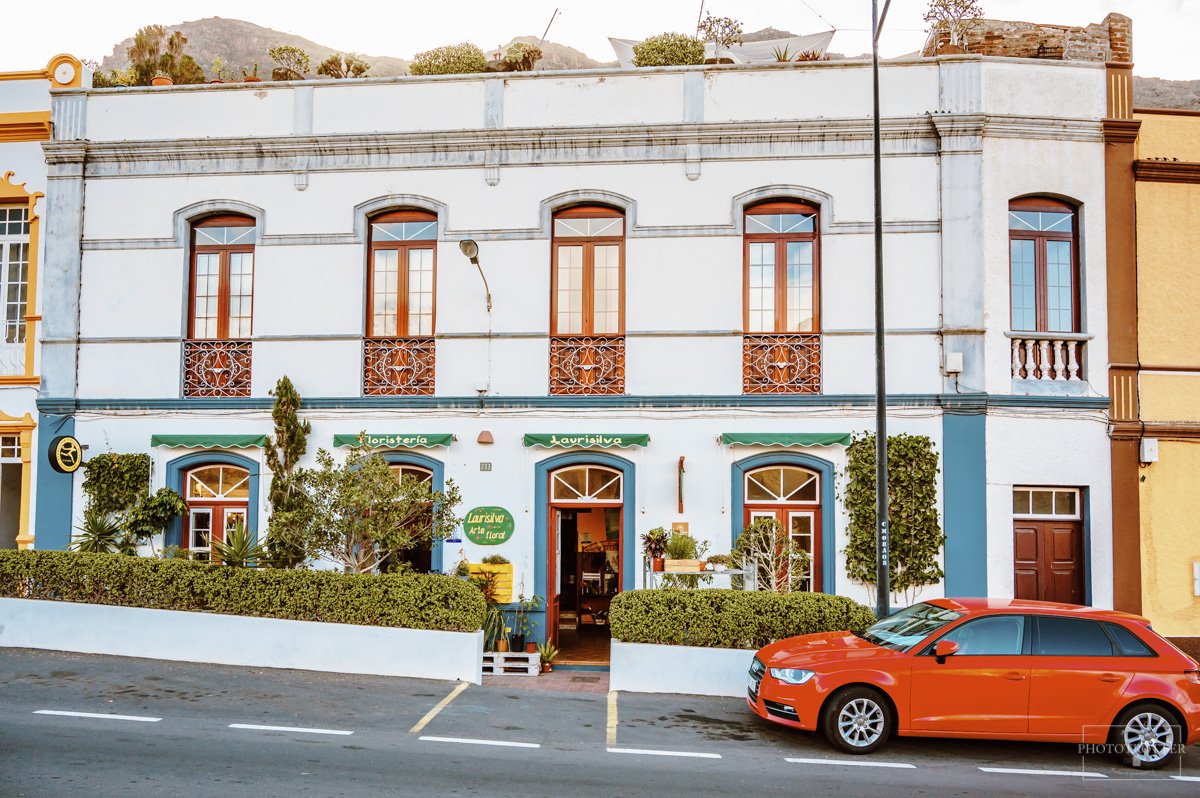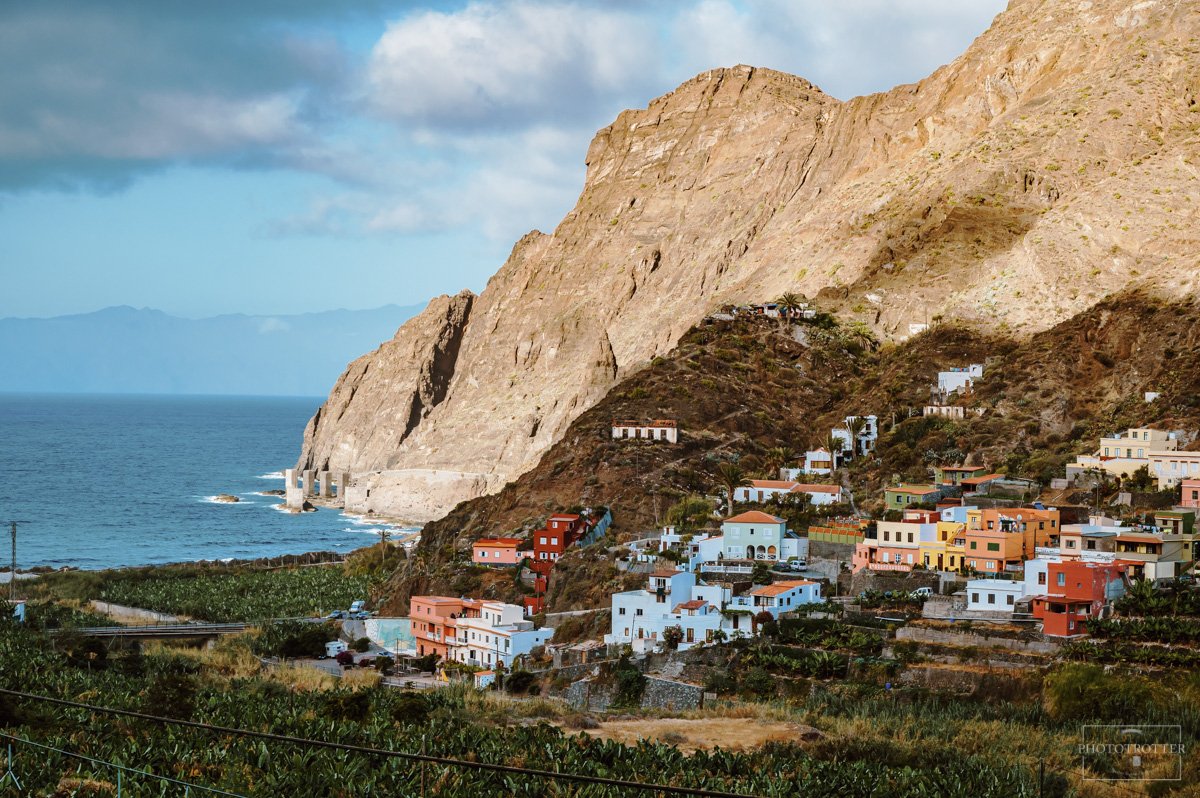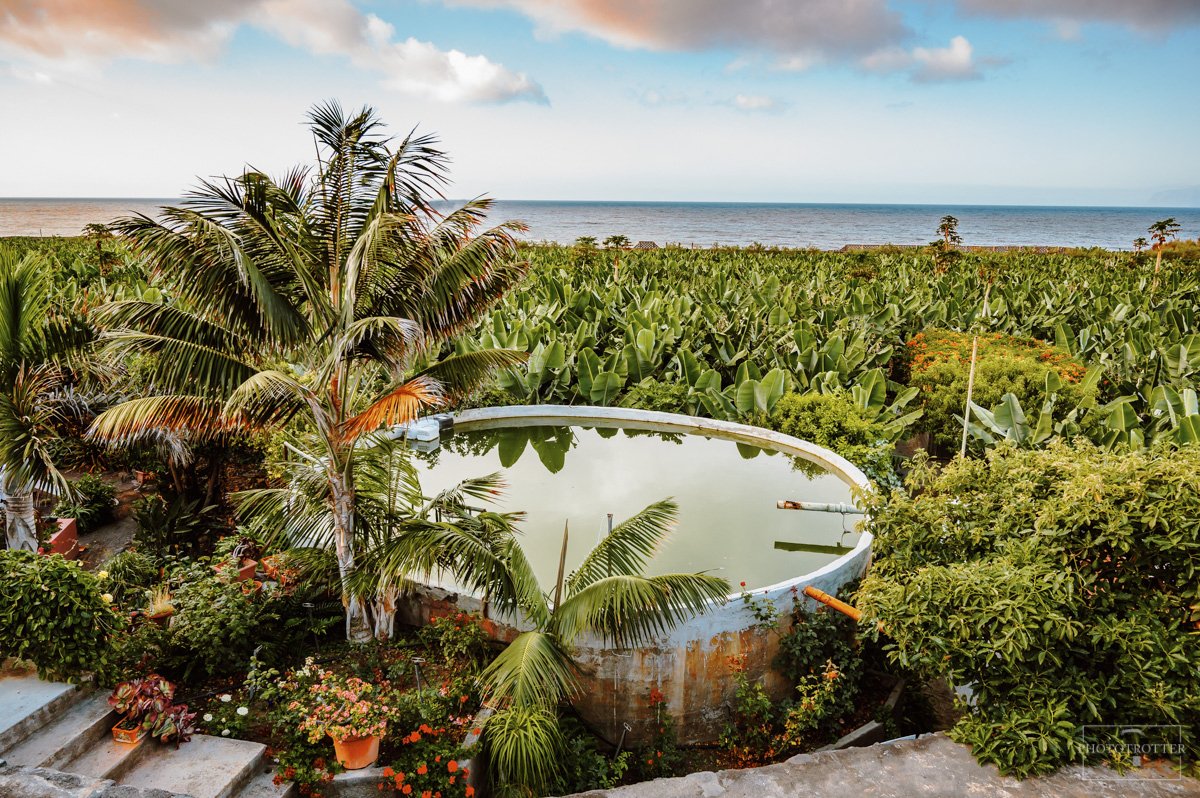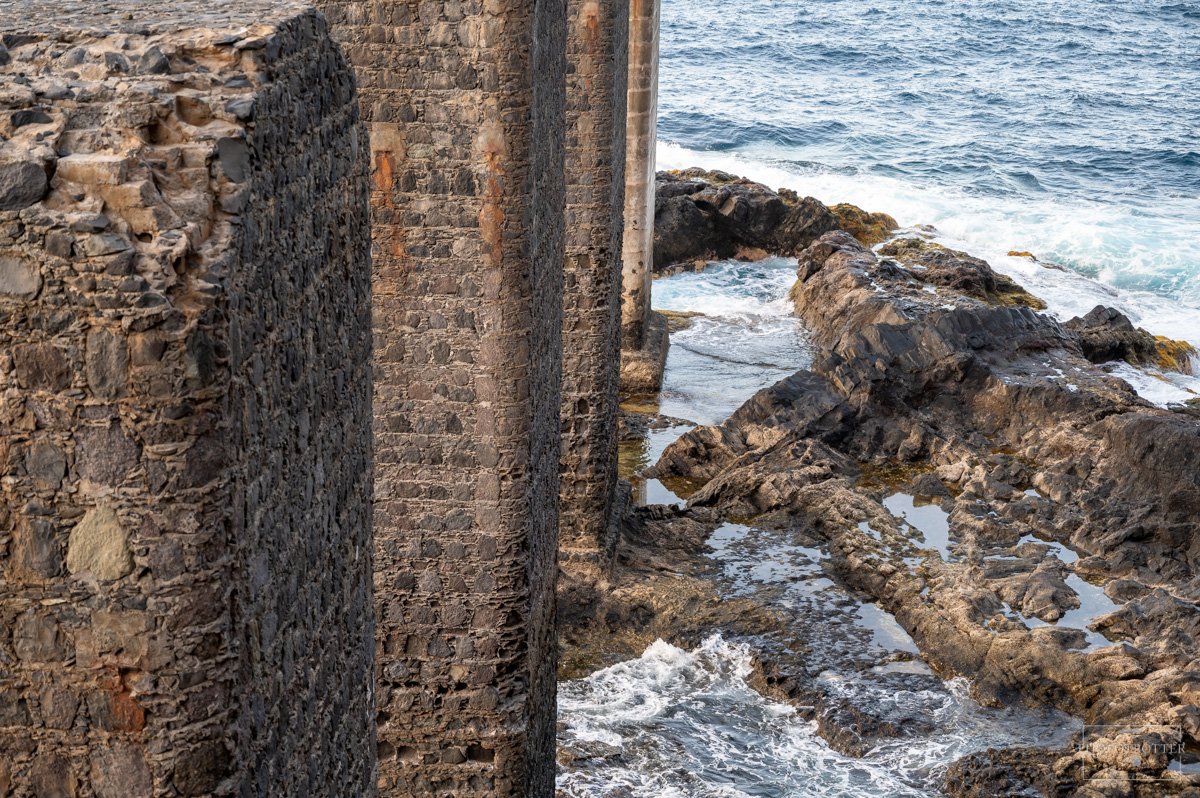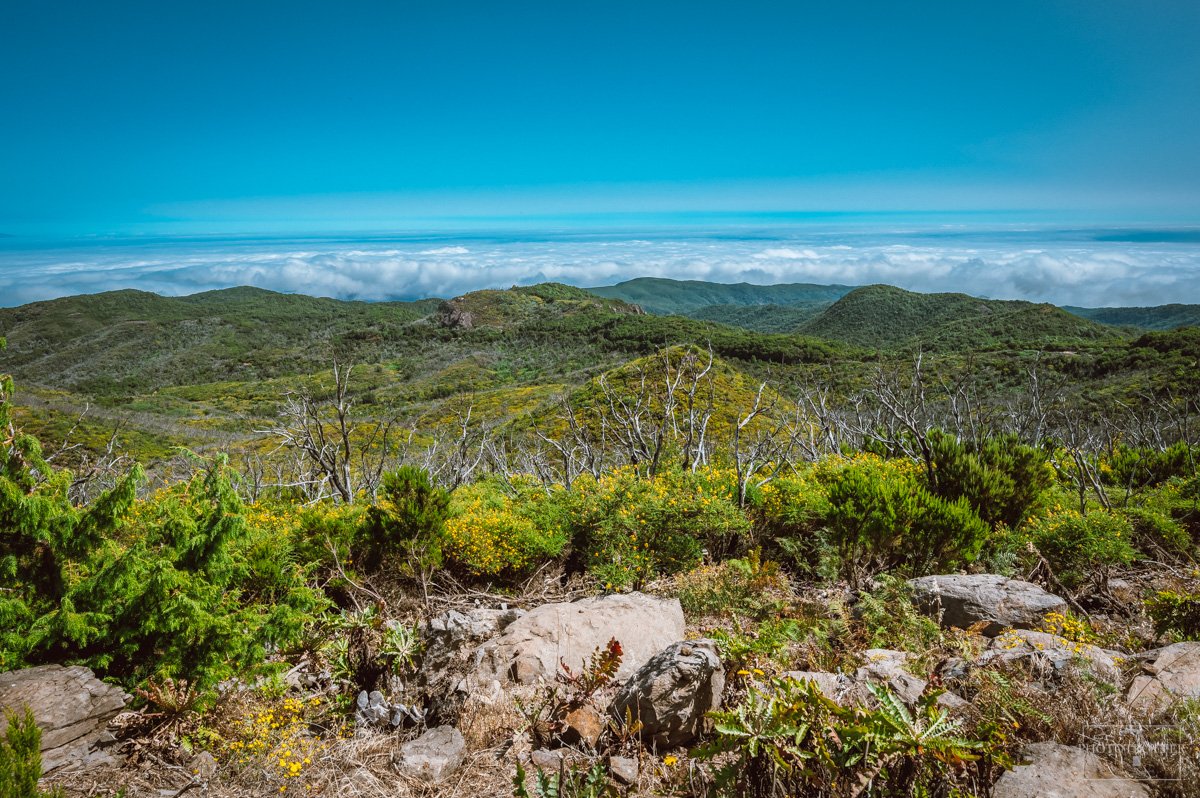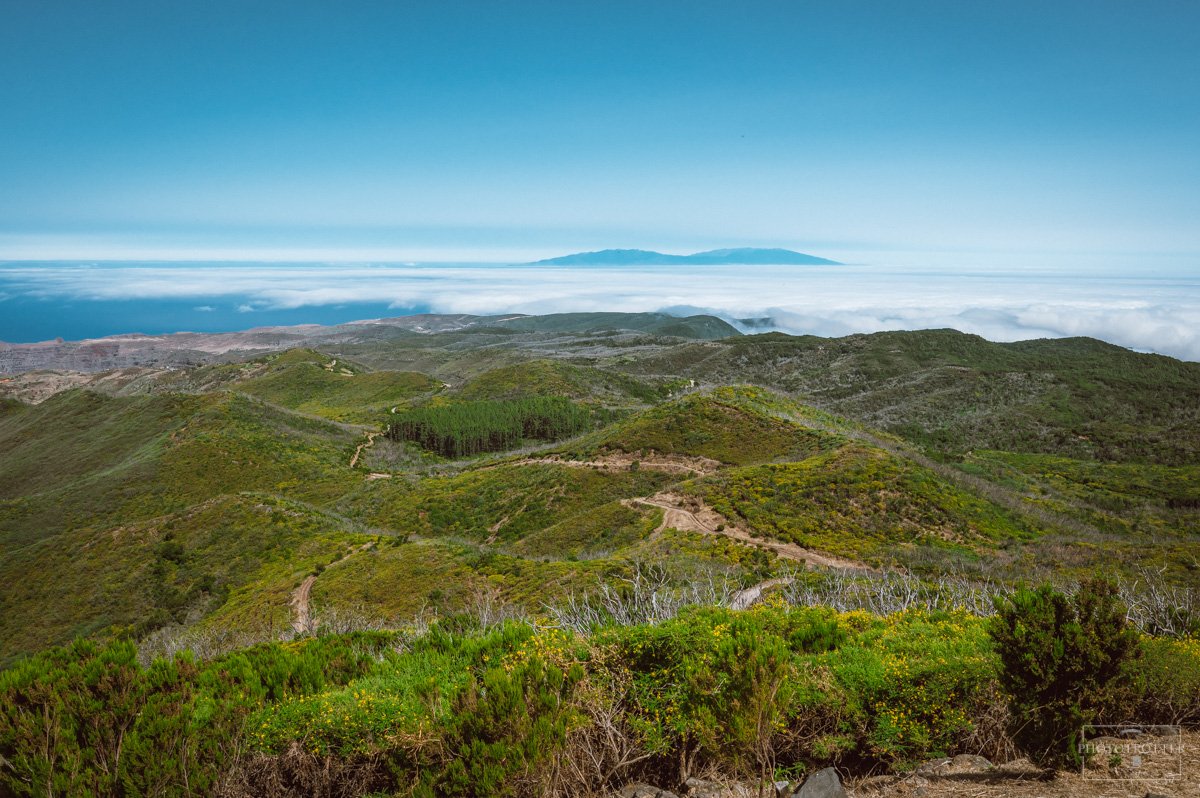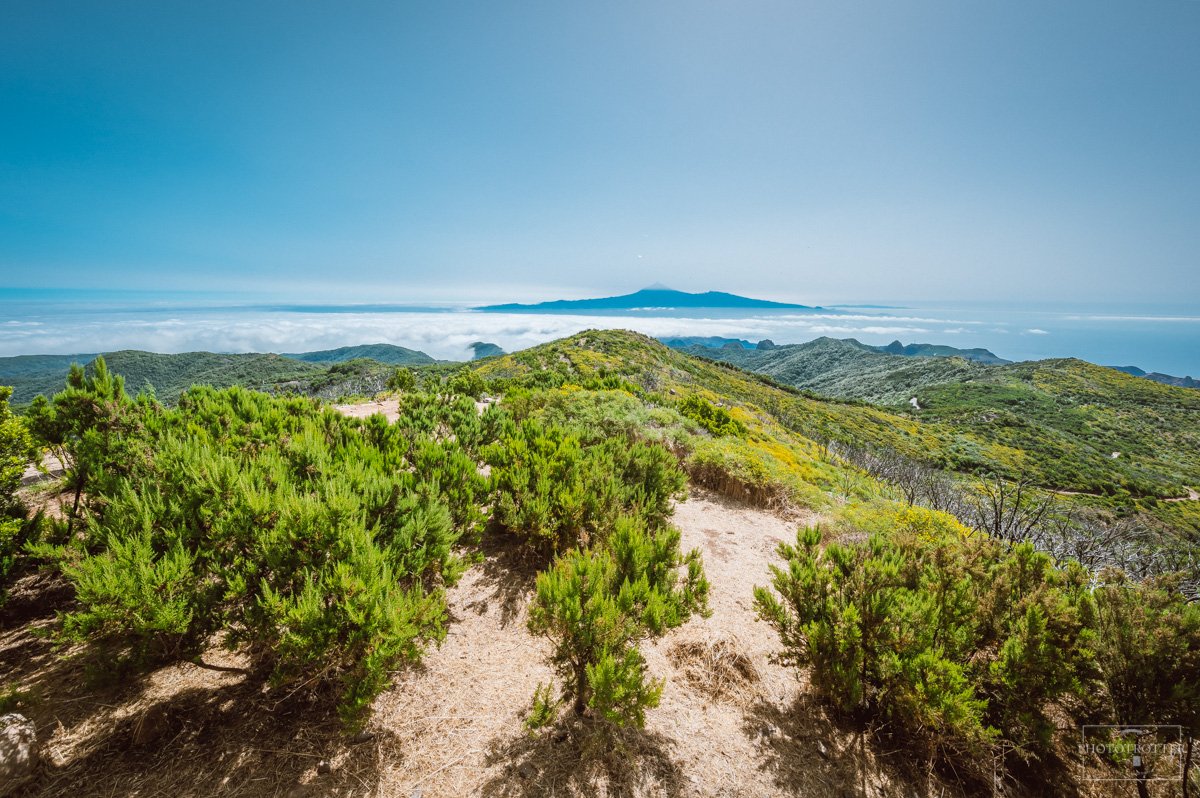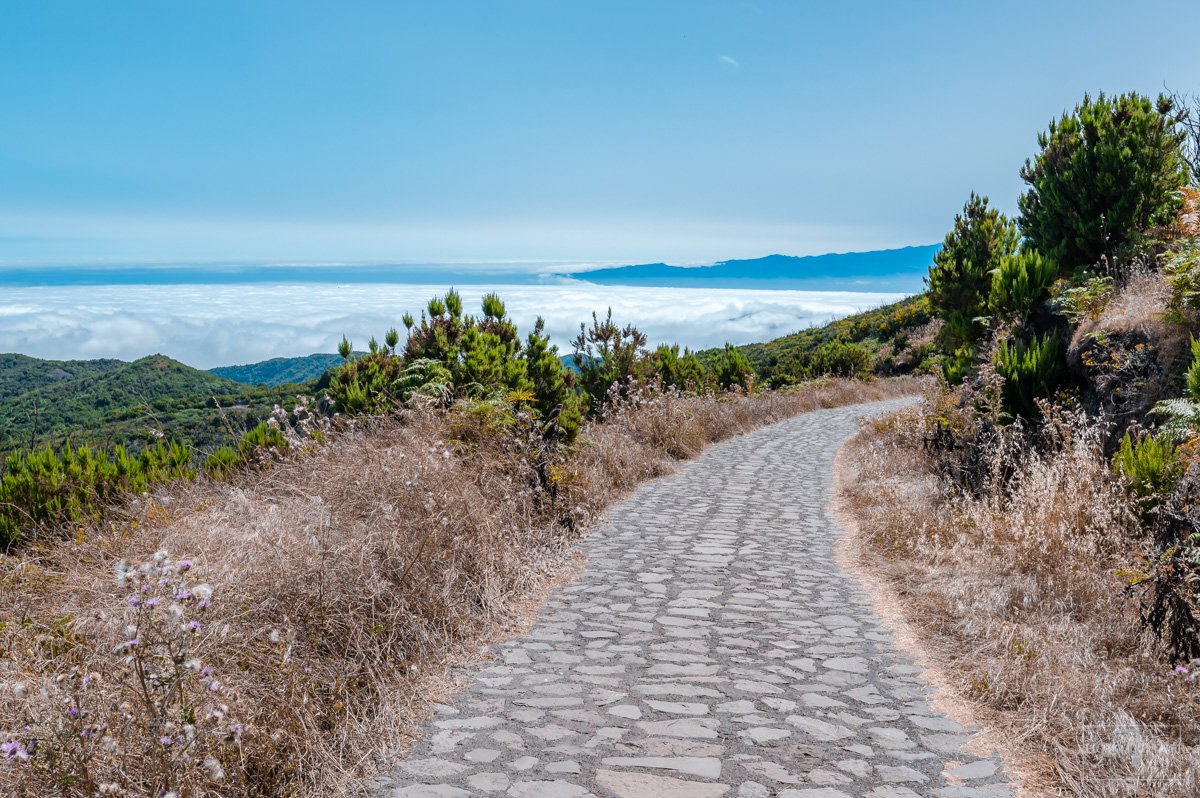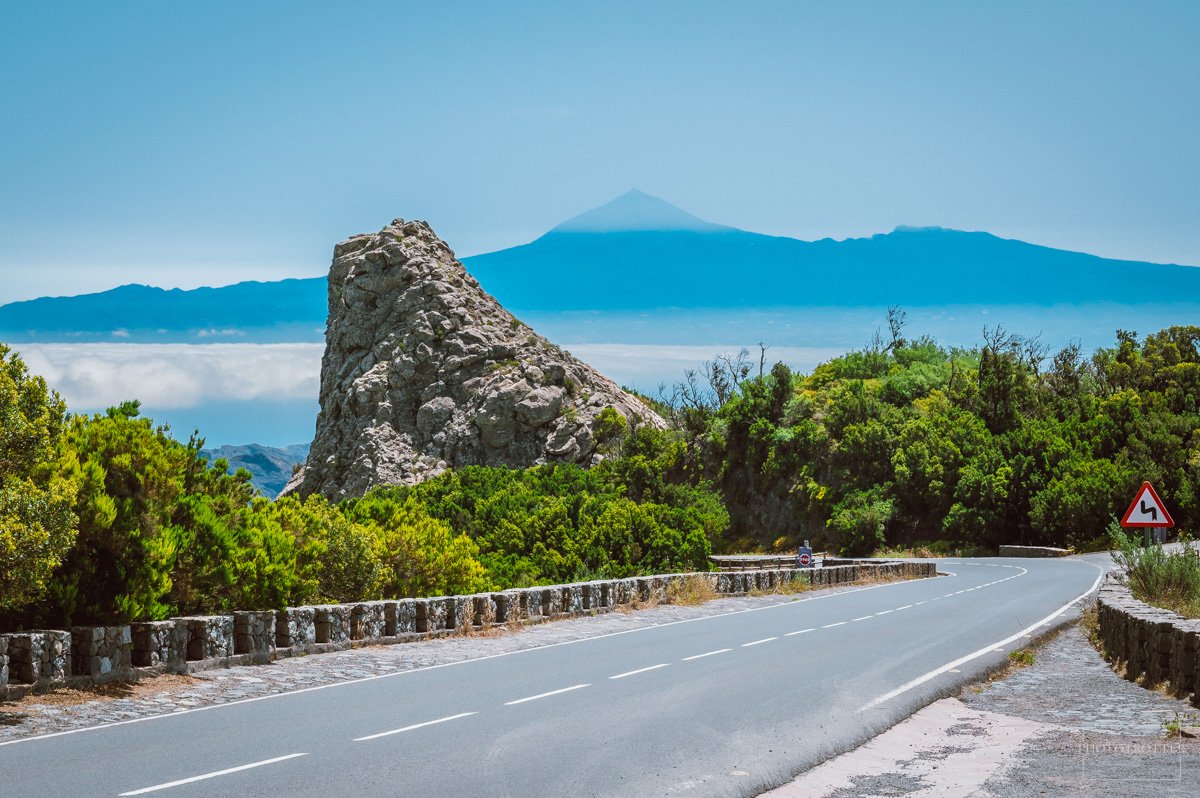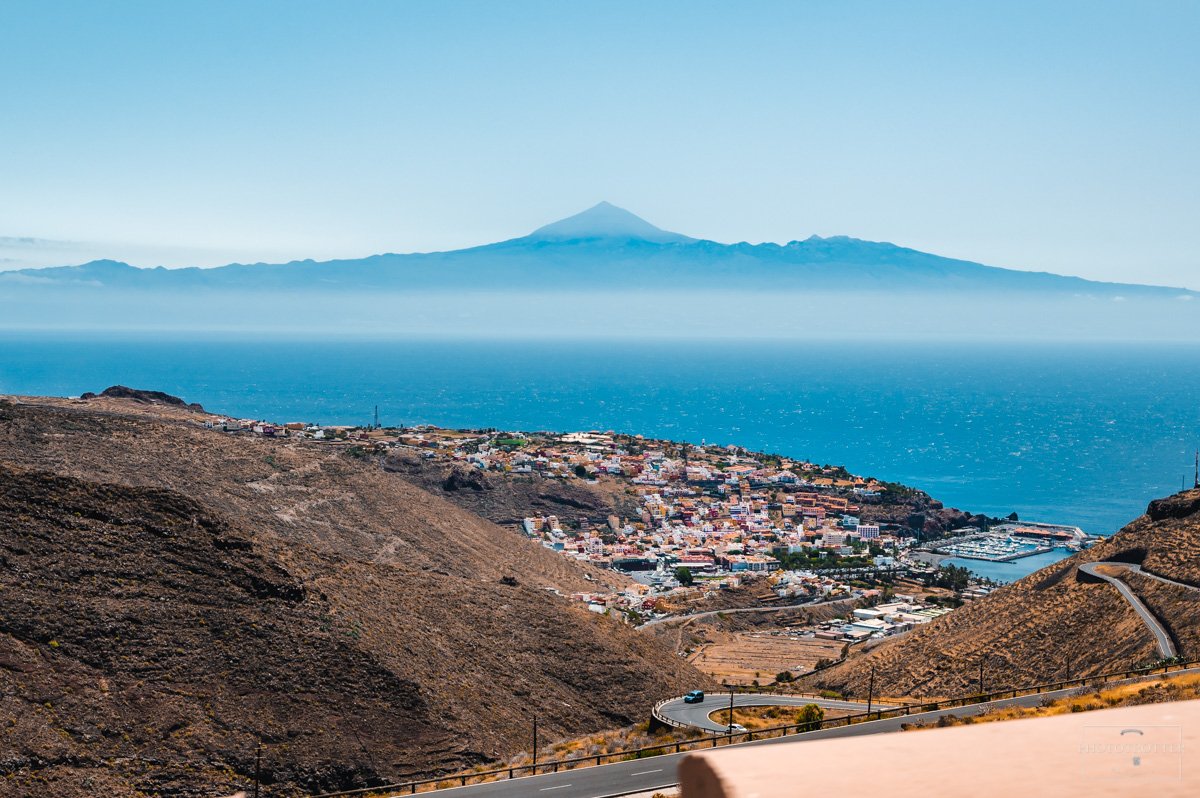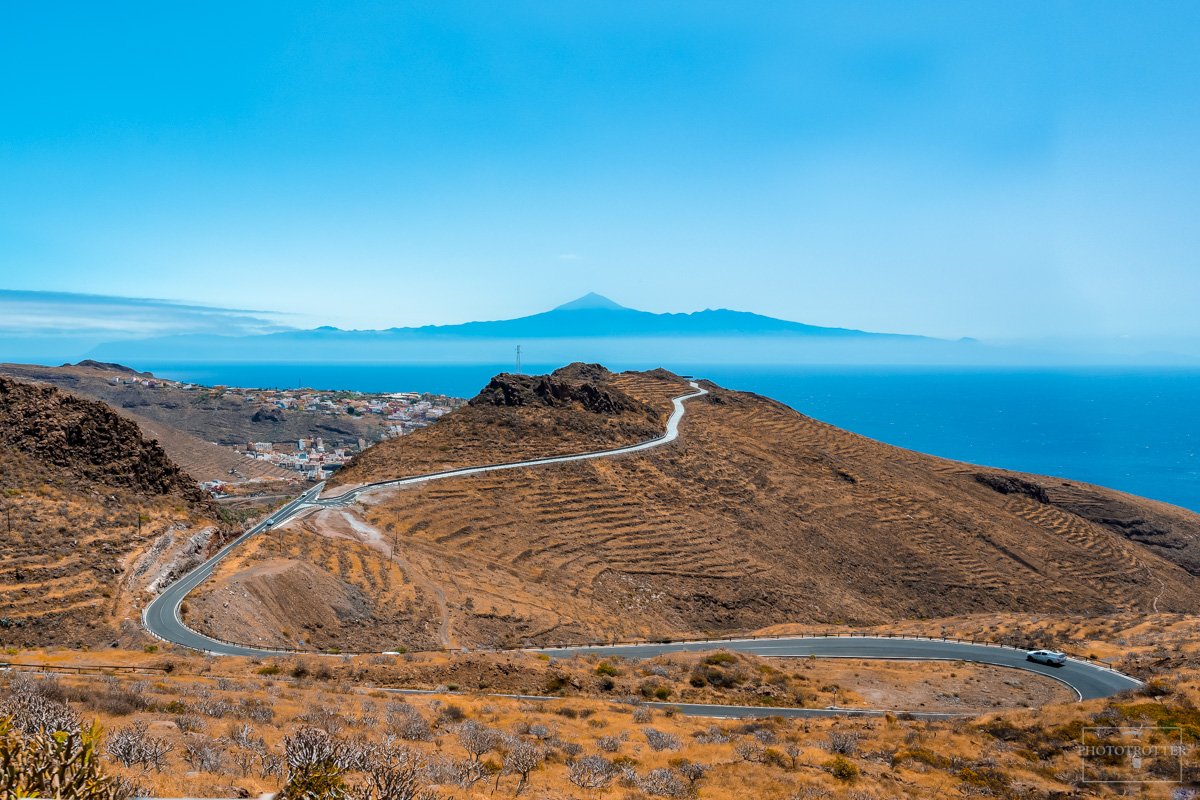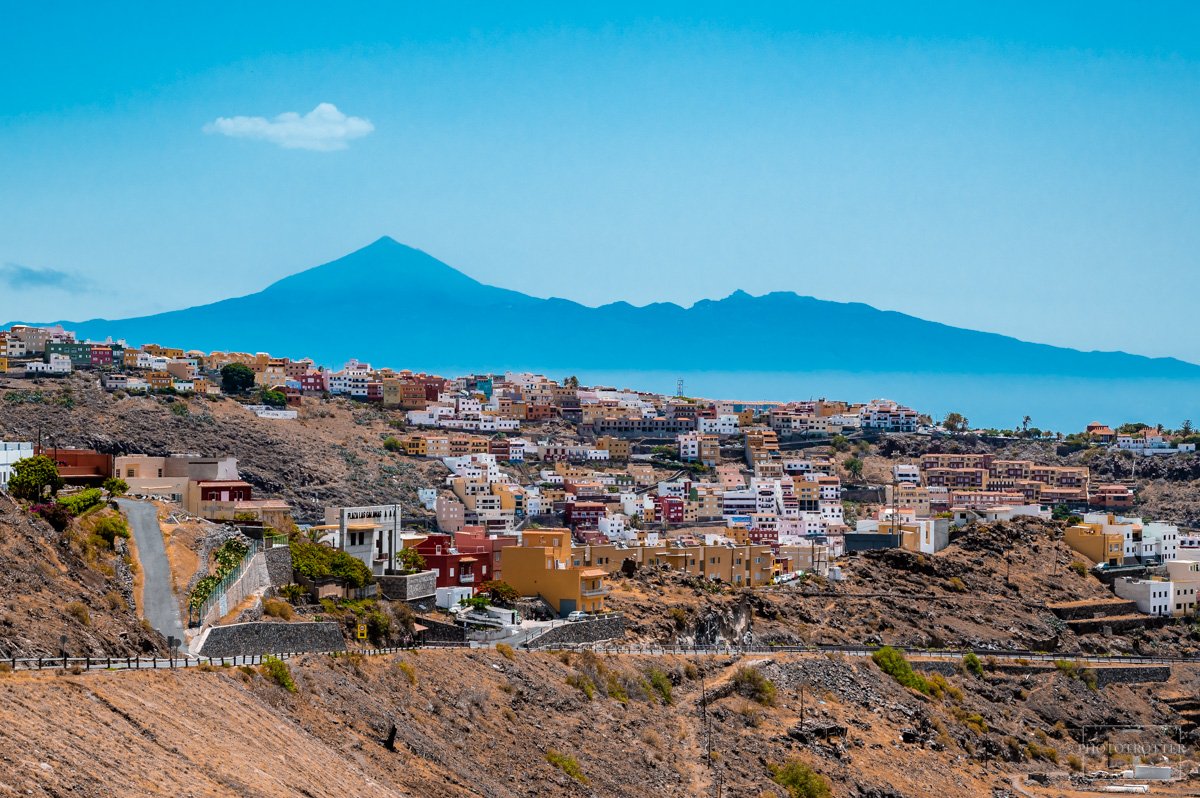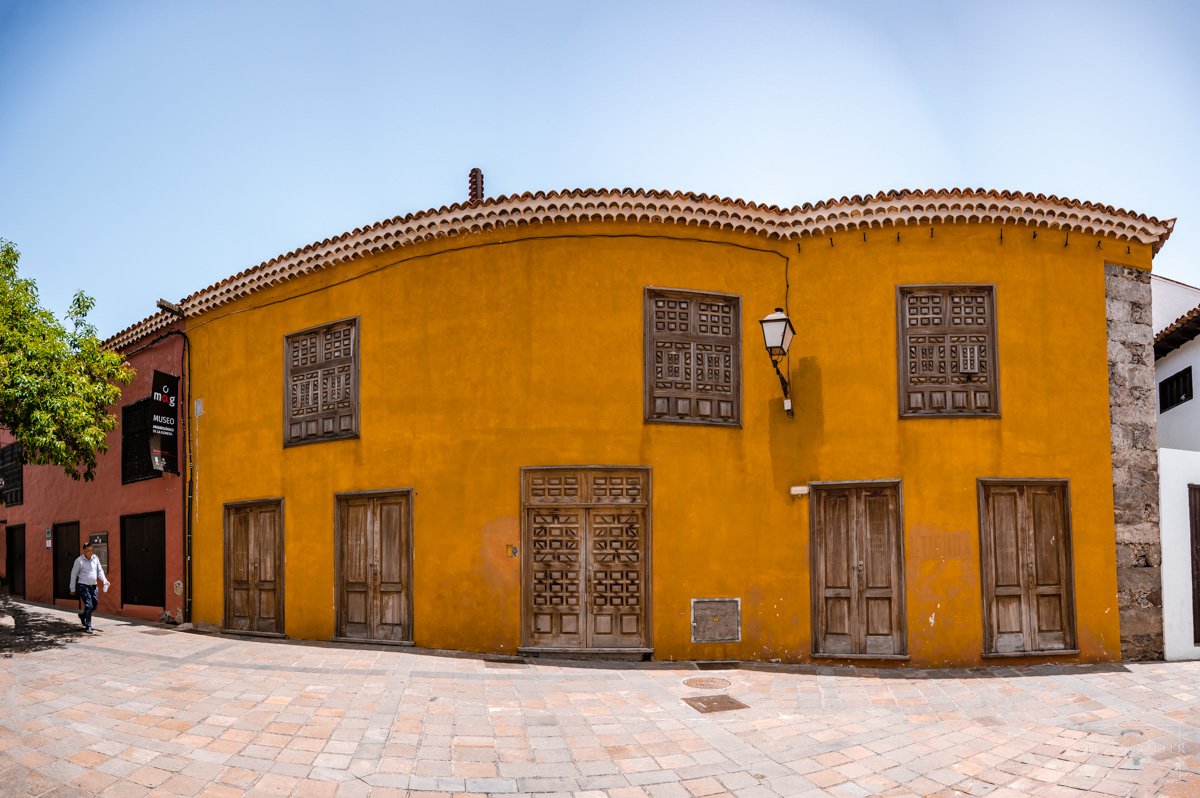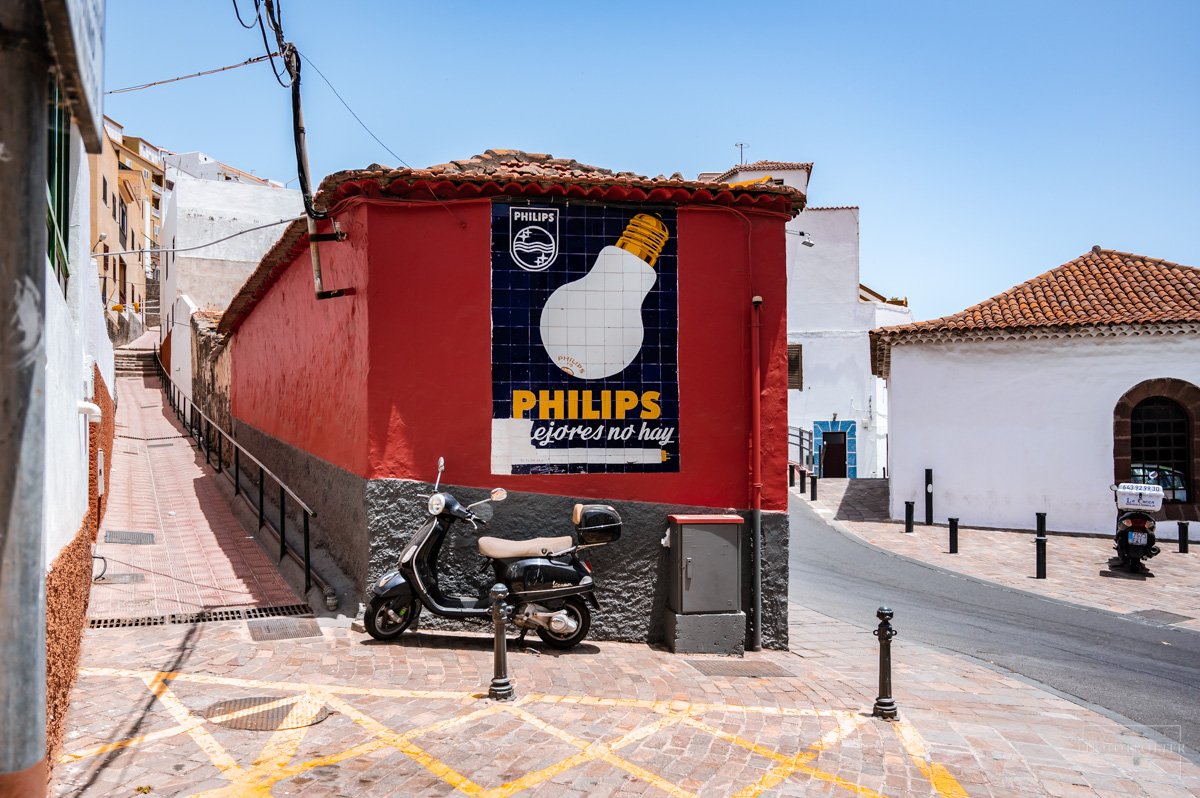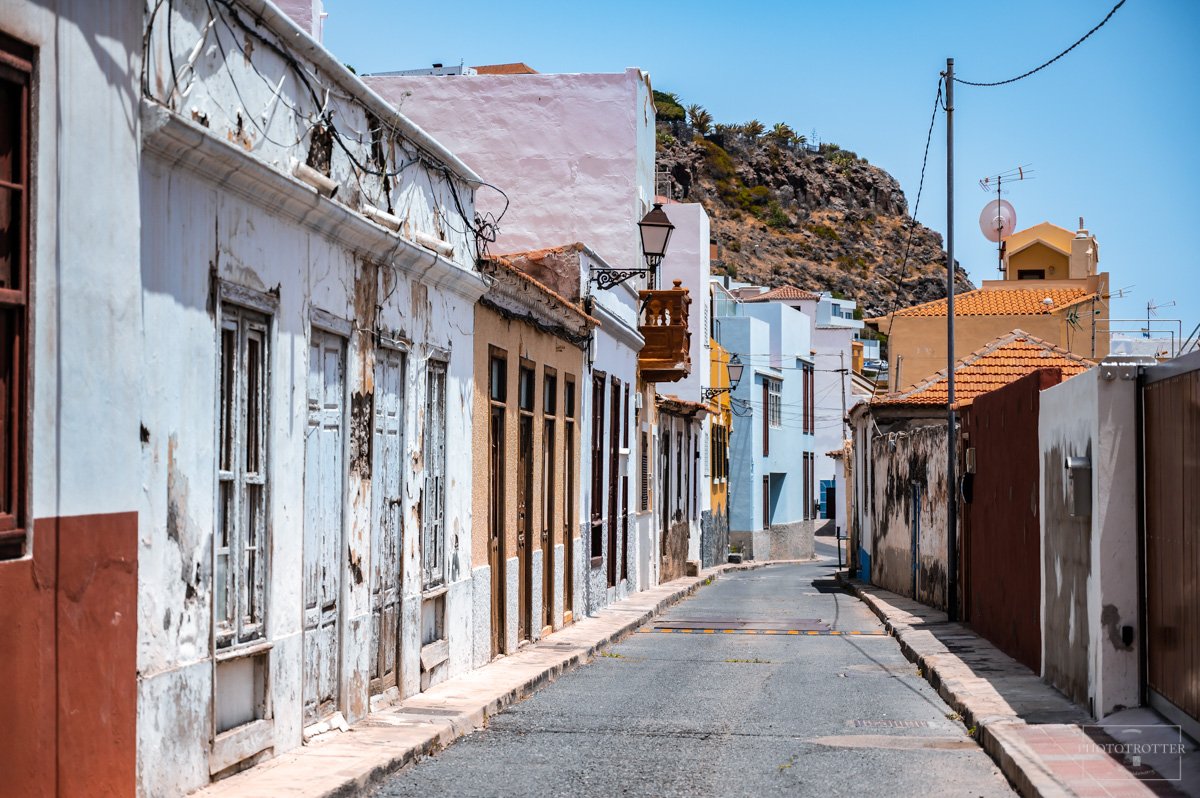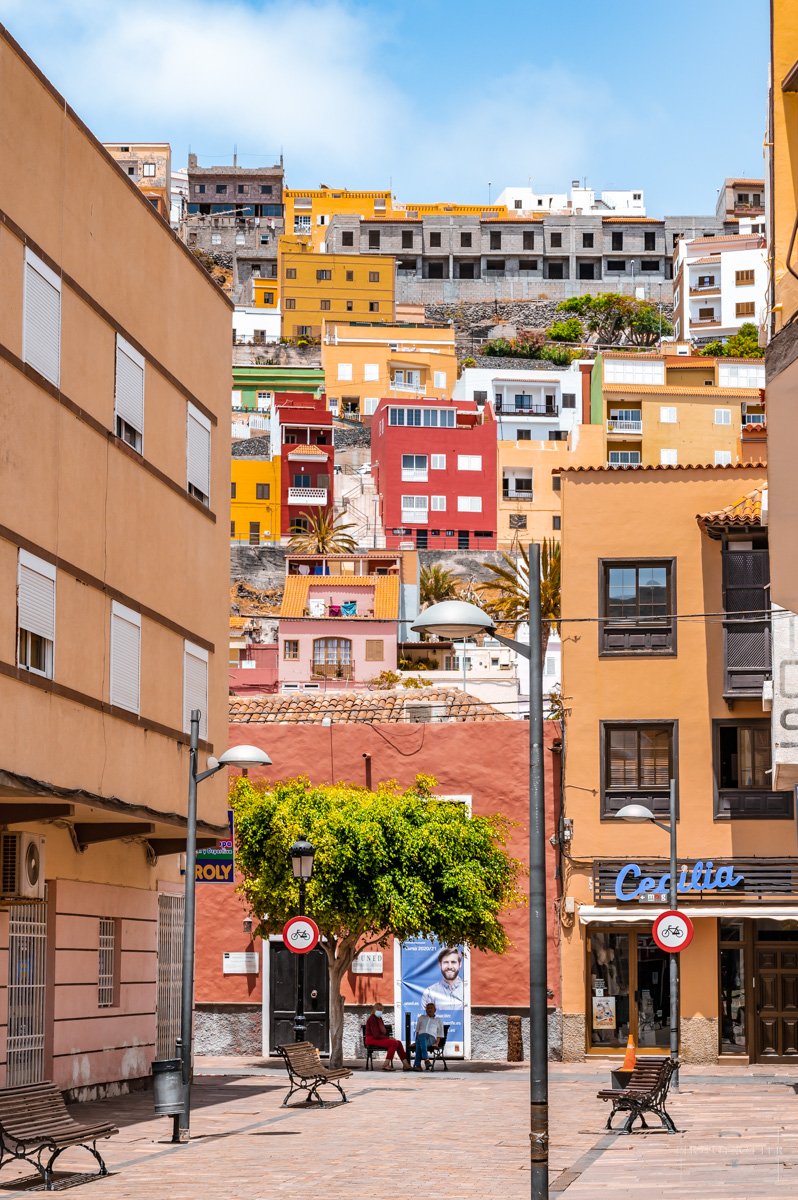Canary Islands: A day on La Gomera
While traipsing on the western coast of Tenerife, we kept eyeing the misty silhouette of La Gomera, the inconspicuous sister of the Canary family. And on a whim, we decided to hop on a ferry and spend a day on La Gomera.
A short and refreshing sea trip later (around an hour, under 40 km, ~45€), we were descending in San Sebastian, the little colourful island capital city, which we readily ignored and went straight for the gold: Hermigua Valley.
Our resident gecko gomero, endemic.
Unlike its more popular neighbours, Tenerife, Gran Canaria and Lanzarote, La Gomera is not particularly a beach destination and most definitely not a party area. You go there to hike, to clear your head, enjoy the rural life and see a primeval laurel forest.
But fine, if you really must, go to the beach. It’s past the banana plantation, stop when you hit the ominous pillars:
El pescante de Hermigua
As you approach the corroded monoliths, towering over you with a slightly menacing air, your fantasy-fed imagination will start looming stories and explanations. Are they ancient? Is this a ritual site? Are they ruins of a former civilization? Were they brought here by aliens?!
If you want to believe so, stop reading and scroll past, to the next topic.
The history of the place is actually quite down to earth - or to sea - these concrete pillars are the remains of the old pescante, the davit / crane built in 1907 to expedite local exports. It was around that time that Gomera had upped its commercial game from farming sugarcane and cochineal (for the carmine dye) to the quickly perishable bananas and tomatoes (which the British eagerly imported).
Background story: La Gomera is a volcanic island, with a tight orography, deep valleys and few beaches. Roads are hard to make, ports are just as difficult to build because of the winds and waves. So what to do with the fresh produce, how to bring them down to the main (and sole) port, San Sebastian? Load’em up in boats and carry them around the island. And to make up for the lack of ports and piers, several davits / cranes were built in the early 20th century. They simply moved the crates (and even baskets of people!) from the rocky shore to the boats. The cranes were mounted on top of these pillars, were steam-powered and the largest crane was 150m long.
The pescantes had a good but short life. In the 1950s decent roads were finally built on La Gomera, so they became obsolete, and remained a part of the industrial heritage, now being a popular bathing spot in Hermigua.
Local colour
I must admit, I was a little disappointed. During our (short) stay on La Gomera there was no hill-to-hill silbo communication and no pole jumping on the rocky slopes. Joking aside, although I truly did hope to catch an echo of the whistling language silbo gomero, the local colour was indeed very nicely preserved and presented, not stale and ostentatiously like in a museum, but in a very authentic and demure way, part of regular daily life.
Speaking of museums, we did go to one, the visitor center Juego de Bolas, where we found out more about the guanches, the indigenous pre-Hispanic population, related to the African Berbere people, and who left their strong imprint on the lifestyle and aspect of the island.
Example of traditional walls, made of dry stone (no mortar), and a loom for weaving carpets.
Other examples of ancient crafts, such as pottery made completely by hand, without a potter’s wheel, or cane and palm string basket-weaving.
We learned about the fascinating whistling silbo language (part of the UNESCO intangible cultural heritage), about the drum dance / baile del tambor, pole jumping / salto con astia (not the sport, but related), cave burials, about terraced agriculture, trigo mills and the ever-present gofio flour.
We also learned some things about the particularities of the flora and the layers of vegetation zones, visible as you travel from the coast up on the volcanic slopes: the scattered hardy underbrush of the tabaibal becoming greener and taller in the termophilic forest, which turns lush and green and full of bird song in the laurisilva and fayal-brezal layers. And that really helped us better assimilate what we were about to see next.
National Park Garajonay
One of the few remaining tropical laurel forests in Europe are found in the Macaronesian archipelago, and a good part is on La Gomera.
Garajonay National Park, which is protected as a UNESCO World Heritage Site, is an ancient but relict ecosystem, a former rainforest which is often shrouded in wisps of clouds and fog. Depending on the season. When we went, smack dab in the middle of a scorching July heat, it was quite dry.
The laurisilva, laurel forest, provides humidity and not only keeps itself green and lavish, but is also the source of most water streams on the island. The ecosystem has been heavily damaged 10 years ago during a forest fire which destroyed about a quarter of the Park and affected many villages. Here and there you can still see some traces of charred vegetation:
From the top of Alto Garajonay (1487m), let’s play “Spot that island”!
If there’s a pointy peak, it’s Tenerife (Teide volcano).
If you see a double hump, that’s La Palma (Taburiente cauldron).
If you can barely see it, that’s El Hierro in the background, the second smallest Canary island.
And the big flat rock you see in the middleground, that’s the so-called Cipude Fortress, without being actually a fort.
Just as you leave the national park, you can see Roque de Agando, one of the most emblematic rock formations on La Gomera.
Stopover on Mars
The greatest thing about a volcanic island is the colours, their vibrancy and texture amalgamation. Smooth dark obsidian pairs with porous pumice, red iron-rich hematite with golden ridges of goethite, frog-green succulents lay on gray basalt slabs and volcanic tuff streaked with cinnabar veins sinks into the blue ocean.
There’s a spot on La Gomera (maybe more, we only found one) where you can definitely imagine yourself on Mars or at least as the last man on Earth in a still, barren, post-apocalyptic world. The stuff Ballard-induced dreams are made of.
Manny was already imagining himself as the evil Little Prince on a red planet.
Food
Although not as readily available, nor varied as in other parts of the archipelago, our food stops have been very satisfactory. The food is simple, fast and filling.
Lunch: grilled fish of the day (sea bass / lubin) and the ubiquitous salty wrinkled potatoes/ papas arrugadas with red and green sauces / mojo verde y rojo.
Bread, cheese and cold cuts for the evening tapas.
San Sebastián
A day and a night later we reluctantly headed back to our main headquarters on the neighbouring island. Having time to spare until our ferry came, we went for a walk in the island capital, San Sebastian, which is quaint and colourful, but not the main attraction of the island.
18th century church
The white two-storey house, second on the left, is Casa de Colón, where Christophor Columbus lodged shortly before embarking again on his Indies-bound journey. Little did he know he would be discovering America, just shy of 5 weeks later, in October 1942.
One last ice cream under the flame trees / delonix. Until next time, La Gomera. Please don’t change.
Check out the slideshow below for many more photos from La Gomera.
Or just hit the photo gallery and see them larger.



